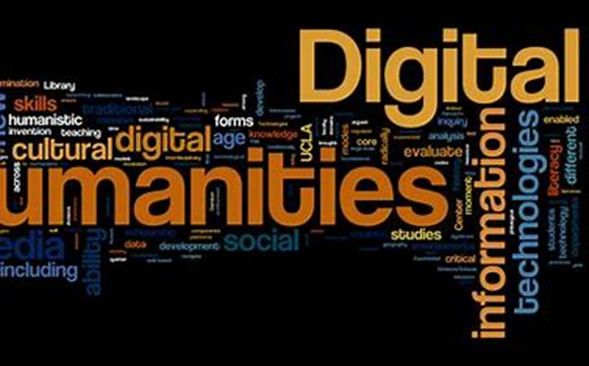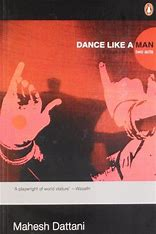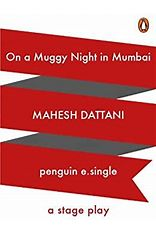Name – Janvi Nakum
Paper- 202 Indian English Literature Post Independence
Roll no- 11
Enrollment no –4069206420210020
Email id – janvinakum360@gmail.com
Batch- 2021-2023(M.A. Sem – 3)
Topic : Post-Feminists analysis of female characters in Mahesh Dattani’s Final Solutions
Submitted to – S.B. Gardi Department of English Maharaja Krishnkumarsinhji Bhavnagar University
Mahesh Dattani
He was born (1958) in the city of Bangalore, though his parents originally belonged to Porbandar in Gujarat. He started his own theatre group named Play Pen in 1984. His plays are performed at his studios and he encourages novice artists to participate in dramatic activities. Dattani has also been teaching drama course at the Summer Program of Portland State University.
. He has written a good number of dramas which are diverse in themes, techniques and devices. He has greatly expanded new horizons in Indian Drama by not only focusing on the themes of conflict between tradition and modernity, communal tensions, identity crisis and inequality but also touching up radical themes ranging gay, child abuse, transgender, HIV positives and physically challenged. Being a multifaced literary and dramatic figure, Mahesh Dattani has given a new height and dimension to Indian English Drama by writing more than a dozen plays. The American playwrights Tennessee Williams and Arthur Miller have influenced him on the matter of stagecraft and other techniques and devices. But he had a very strong urge and affinity for Indianness. He has made sincere efforts for making stage befitting the Indian milieu. He also uses a good number Gujarati, Kannada and Hindi words in his plays.
His Works
1.Dance Like a Man (1989),
Tara (1990),
Bravely Fought the Queen (1991)
Final Solutions (1992) for which he won the prestigious Sahitya Academy Award in 1998.
Needful (1997),
Seven Steps Around the Fire (1998),
Clearing the Rubble (1998),
On a Muggy Night in Mumbai (1998),
30 Days in September (2001)
Brief Candle (2009)
Post-Feminists analysis of female characters in Mahesh Dattani’s Final Solutions
In Final Solutions, Dattani represents the female characters like Hardika, Smita and Aruna. They make realization that women are not a shadow of male. Today woman is making her spaces. She has a better understanding of realization of identity both inside and outside the family. A woman of liberal ideology views the situation as an individual and constructs the image of life beyond the specified ideology of religious and community-based prejudices. She retains the power to change the conventional thinking and to make better realization of her hidden potentials. She wants to take decision for herself and if it is right she can protest against those agencies who are responsible for her sublimation.
The post-modern ideology suggested the way of interpreting the life condition beyond the set patterns of ideologies. It accepts that human experiences are persistently in a state of flux and it’s set pattern of ideologies becomes a burden for the free growth of the individual. In this new method of literary investigation, the feminist ideologies have also undergone a drastic change. It is not confined only to defend the cause of female emancipation and the spaces for the economic and social security of woman. The post-feminist interrogations of the female identity and female roles aim at the deconstruction of the constructed patriarchal structure. It has provided a wider canvas to construct the voice of women in family, society, professional life and personal relationship.
In post-feminists phase of feminism, female identity and female consciousness to assert their voice has been reflected in the diverse ways. Her individual strength helps her to express her potential in social, patriarchal and personal spaces.
Carden, who is one of the members of national organization of women presents her views:
I want to have in creating a new society … I want women to have something to say in their own lives … I have never reached my potential because of social condition. I am going to get the reward. I have been crippled. I want to see the kind of system that facilitates the use of potential.
Feminine consciousness focusing to restore a position in the process of social justice. According to Mahesh Dattani a woman has the equal sensibility and better realization of feelings.
In the realism of Indian English drama, the theme of communal violence has successfully been presented by two eminent dramatists – Asif Currimbhoy in Refugee (1971) and Mahesh Dattani in Final Solutions (2005). In Final Solutions, Dattani uses his pen to present the insecurity and mental crisis of the victims of partition. In this play, his intention is not to construct the dark pages of Indian history like that of Karnad’s Tughlaq but to deconstruct the lingering effect of the communal prejudices on the survivors of both the communities, Hindus and Muslims. He explores the psyche of discontent, exile, contempt, homelessness and alienation often affecting the sensibility of Hindus, Sikhs and Muslims. The communal animosity between the Hindus and Muslims have turned into the fatal disease affecting the peaceful existence of individuals in Indian subcontinent.
At the time of the creation of Final Solutions, Dattani was in search of a new theme representing Indian soil. In one of his talk delivered on 11th Feb. 2011 at Ravindra Kalakshetra as a part of Krishi Festival plays to celebrate the 50th anniversary of Bengali Theatre in Bangalore, he observed:
Man has created a very complex language called theatre. A language that has the ability to redefine the natural concepts of time, place and movements. A language that goes beyond the verbal, a movement that goes beyond physical.
In Final Solutions, beyond the contentions of traditional language, he constructs the language of wounded psyche sharing the burden of communal hatred. Alyque Padmasee as a director of the play tried to investigate the hidden motive of the play and comments:
As I see it, this is a play about transferred resentment. About looking for a scope goal to hit out when we feel let down humiliated. Taking your anger on your wife, children, or servants is an old Indian custom. This is above all a play about a family with its simmering undercurrents.”
This idea of anger justifies that Dattani was not motivated to make Final Solutions a political or an historical play. In her analysis of the play, Deepali Agarwal observes:
Mahesh Dattani puts the eternal question with his play Final Solutions that every now and then rankles our consciousness – are the human beings real humane. It propels us to perennial problems as to what’s that we should have priorities – our religion, our perennial ideals or our compassion for other human beings.
In the play Final Solutions, Dattani represents the three female characters – Hardika, Smita and Aruna. He adopts an innovative narrative technique and the major dramatic events float through the consciousness of Hardika, the grandmother in Gandhian family. The dramatic conflict springs and develops through the reflection of Hardika whose consciousness remains rooted in the horrible events of partition that took place forty years back. The dramatic narration shifts between the present to 31st March 1948 when Hardika, the grandmother was a young girl of 14, known as Daksha and in her reflections she concludes that nothing as has changed and prejudices of communalism are haunting their consciousness continuously. In her diary entry, she mentions:
After forty years … I opened my diary again. And I wrote a dozen pages before. A dozen pages now. A young girl childish scribble. An Oldman's shaky scrawl, yes the things have not changed that much.
She also makes mention of her father’s dream of independent India. In Final Solutions, Dattani projects multilevel stage to represent multiple layers of context involved in the issue of communal violence. In Daksha’s reflections and recollections of Diaries, Dattani exposes inner world of individuals encountering tensions and conflicts of personal relationships. She recollects the memories of her husband Hari and the friend Zarine. She also feels nostalgic for the melodious songs of Noor Jahan. In Final Solutions, Dattani uses two time spaces to indicate the construction of collective consciousness. Disrupting, Hardika’s flow of consciousness, Smita appears with the rumours of bombing the Muslim Hostel where her Muslim friend Tasneem live. The violence erupted after the sabotage of Hindu Rath Yatra. Curfew was clamped in the city. Ramanik, the father tries to divert the attention by a casual remark, “Wait a minute. That wasn’t a bomb.
Smita, Gandhi’s daughter talks to her friend Tasneem whose hostel was the center of blast. Smita, a girl of liberal ideology views the whole situation as an individual and constructs an ideology beyond the ideology of religious and racial prejudices. She reveals her feeling to her mother:
It stifles me! yes! May be I am prejudiced because I do not belong. But not belonging makes things so clear. I can see so clearly how wrong you are. You accuse me running away from my religion. May be I am embraced, Mummy.
Through this observation of Smita, Dattani presents how the communal prejudices are constructed and how these lead to anger and hostility. Aruna, the mother and Smita, the daughter. Smita trifles that out of personal insecurity Javed left his home.
In Final Solution, the real anger and prejudice born out of communal frenzy, is rooted in her collective consciousness Hardika who is a monument of both the times past as well as present. Communal prejudices are rooted in her collective unconscious and it governs and guides her responses.
In Final Solutions, Dattani tries to investigate that the reactions to communal prejudices are closely associated with gender difference. Women like Hardika, Smita and Aruna even in their feminine grace and silence can better retaliate to their oppressors. It shows women can think beyond their physical conscience on the matter like communal violence. Aruna and Hardika are no longer interested in their sympathies, Smita too subsequently develops suspicion and resentment for Javed and Bobby. Through the anger of these three women, Dattani suggests that at mental level women are more closely related to communal and religious identities and have a deeper realization of the humiliations done in the name of religious fanaticism. The anger of these three women is an example of independent thinking. The history of horrors of partition that implies the loss of family and personal relationships have deep impressions on the mind and sensibility of women. It is said:
The history of partition was a history of deep violation – physical and mental for the women who experienced it through women were very much a part of millions who witnessed partition. They seldom figure as the ‘subject’ in the master / male narratives. Women as ‘victims’ are also mentioned but no specific attention is given to their traumatic experiences.
It signifies that feminine psyche is more sensitive to the issue of partition. In the second Act, Dattani within the texture of Final Solutions, constructs the psychology of prejudice, contempt, anger and rescue that is an integral aspect of community consciousness. Javed took revenge upon neighbors by dropping pieces of meat in his backyard. The incident robbed him of his own insecurity of life conditions. The individual anger becomes a part of the anger of community as a whole and its cumulative effects can become a burden to the solidarity of nation.
Ramanik and Javed confess their actions, the hesitation of Javed and Ramanik suggest that each individual survives with a human identity that is beyond externally imposed communal identity. Like Javed and Ramanik, Smita also feels suffocated and wants to escape in the company of Babban defying the conditions of religion. The love relationship of Smita and Bobby becomes an interlude to find out the ultimate solution to the problem. The relationship of Smita and Bobby shows that how Smita being a woman is ready to accept the challenges of Inter-community relationship. The three friends share light moments when they go to fetch water the well. Smita makes Javed touch the sacred pot to prove that human touch cannot contaminate the sacred water. Hardika as a foil to Smita is not ready to come out of anger how under the pressure of communal violence, she was forced to lose her family responsibility. Dattani accepts that rational grounds for the religious prejudice is the only mechanism to make society free from communal riots and to ensure internal security to every individual.
The third act of the play Final Solutions brings a climax to the play. It witnesses revelations and confessions of character and it provides an insight into the psyche of the characters. Here Dattani through self-revelation technique provides opportunity to characters to seek transformation of their ideologies. After intense psychological pressure and resistance, the characters construct their human identity. In the opening of the III Act, most of the characters indicating the members of chorus puts through the state of identity crisis. Dattani, through the confession of different characters, assert that they might sacrifice their communal identity. Ramanik fails to see Javed as a sensitive youth turned into a rioter by ill luck till Bobby gives him the truthful account of Javed. In his dramatic narration, Bobby unfolds the past of Javed. Besides of presenting the psychology of Javed and Bobby, Mahesh Dattani in expressing religious fanaticism constructs mob psychology also.
Mob has its own cruel psychology and cannot discriminate right and wrong. So far mob psychology concerned, there is no difference between Hindu and Muslim mob. Finally, Bobby gets success in convincing Javed and ultimately to take shelter in the house of Ramanik. Even Aruna has a realization of her weakness and there is drastic change in her attitudes and ideologies. Aruna’s consciousness moves in the direction of the positive acceptance of religious differences. The rational arguments of Smita and Javed make her speechless. Smita, no longer cares for the group and community identity. She accuses her mother and makes her realize her responsibility towards society. As soon as the play Final Solutions move in the direction of settlement, Javed’s anger subsides, Aruna’s prejudice gets a release. Mob! Chorus also shouts, “Our future is threatened. There is so much that is fading away. We cannot be complement about the glorious past seeing us safely through.” The mob sinks into silence.
Hardika realizes her guilt and it suggests that Hardika’s animosity for the community of Muslim was a self-conceived ideal and therefore the modifications are likely to be introduced. In Final Solutions, Dattani successfully suggests the redressal and elevation of human psyche against the obscurities of social ideals.
In the character of Hardika and Javed the unexpressed anger accumulated out of the bitter experiences of past suggests that the communal prejudice become and part of collective unconscious and therefore, they become integral part of human personality.
In the character of Smita, Hardika and Aruna, Dattani admits that women have greater consciousness and deeper realization of communal and religious identities.
Women are not a shadow of male. They have their own individual identity.
- Women can think beyond their physical conscience on the matter like communal Even she has the better realization than male in every aspects of life.
- They retain their awareness in society. Now they are very much aware about their position, their desires and their dreams.
- Women have the quest for the improvement of social status.
- Woman is ready to accept the challenges of Inter-community. Smita who is a young girl represents the dynamism of new generation.
- Anger of the women in the play is the representation of independent thinking.
Words : 2600
Works Cited
Collins, Larry, and Dominque Lapiers. “Mahesh Dattani's Final Solutions: an Analytical Study.” International Journal of Humanities and Social Science Invention, 20 August 2019, https://www.ijhssi.org/papers/vol8(8)/Series-2/E0808024954.pdf. Accessed 5 November 2022.
Dattani, Mahesh, and Pankaj Kumari. “Final Solutions by Mahesh Dattani, A Post-Feminist Analysis.” Ashvamegh, https://ashvamegh.net/post-feminist-analysis-final-solutions-mahesh-dattani/. Accessed 5 November 2022.



















